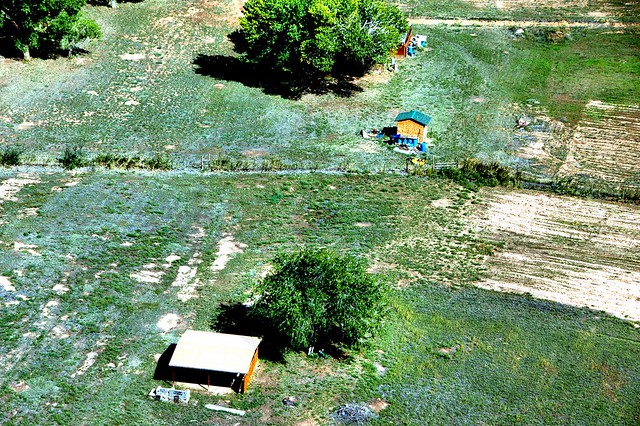The sign is clear and unequivocal: Private Property. No Photography. The area behind the sign is empty. There are no buildings, no livestock. What doesn’t the landowner want you to see? As you follow the chain link fence towards White House Ruin, stands of cottonwoods and green brush block the view. Glimpses through the trees reveal that there is something there — a house or a barn. You continue on to the ruin where you meet vendors selling jewelry and crafts. On the way back, you see other tourists photographing the sign.
Many national parks and monuments contain private land, some more than others; so Canyon de Chelly is not unique. Some overlooks (such as the one above) let you look down into the lives of the farmers and sheep herders who make the canyons their home. You might ask “What is the problem?”











